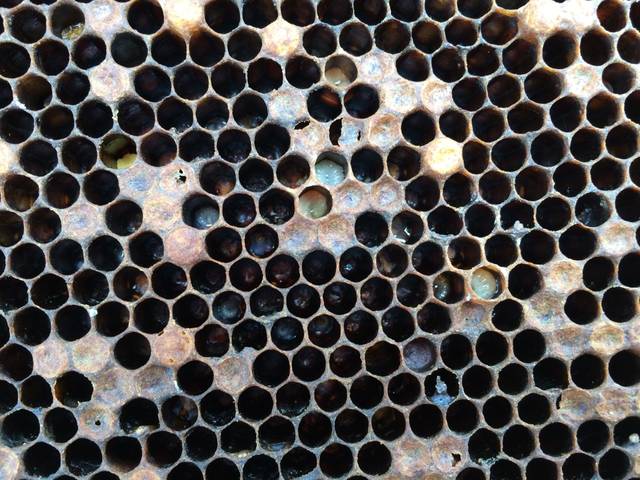HONOLULU — The Hawaii Department of Agriculture sent notice to beekeepers across the state Wednesday of a new case of American foulbrood (AFB), a bee disease that decimated much of Hawaii’s honeybee population in the 1930s. ADVERTISING HONOLULU — The
HONOLULU — The Hawaii Department of Agriculture sent notice to beekeepers across the state Wednesday of a new case of American foulbrood (AFB), a bee disease that decimated much of Hawaii’s honeybee population in the 1930s.
AFB spores, which can live more than half a century and have been detected across the globe, is infectious to bee embryos and kills bee larvae. Colonies infected with AFB rarely survive, an HDOA release said.
The newest case of AFB prompting the release was diagnosed by a beekeeper in a hive on Kula, Maui. HDOA said hives on Oahu and Hawaii Island were also infected in February and October of last year, respectively.
Dark and moist honey bee cells emanating a scent similar to that of decaying animals are typical symptoms of AFB. Larva inside the cells shrink, the release said, and “normal convex capping becomes concave.” Infected bee brood frames will produce spotty patterns as the disease mixes with healthy brood cells.
“Beekeepers around the state should be vigilant in inspecting their hives for signs of this disease,” John McHugh, administrator of HDOA’s Plant Industry Division, said in the release. “Since the spores will always be present, the best strategy for disease control is early detection.”
AFB bacterium is essentially immune to heat, disinfectants and most antibiotics. HDOA recommends infected hives be burned and destroyed.
Because of diseases like AFB, it is against the law to bring in used beekeeping equipment from outside the state or to transport it from one island to another without HDOA consent and an inspection.
Anyone interested in more information on detection and treatment of AFB may reach out to the Apiary Program in Hilo at 339-1977.




